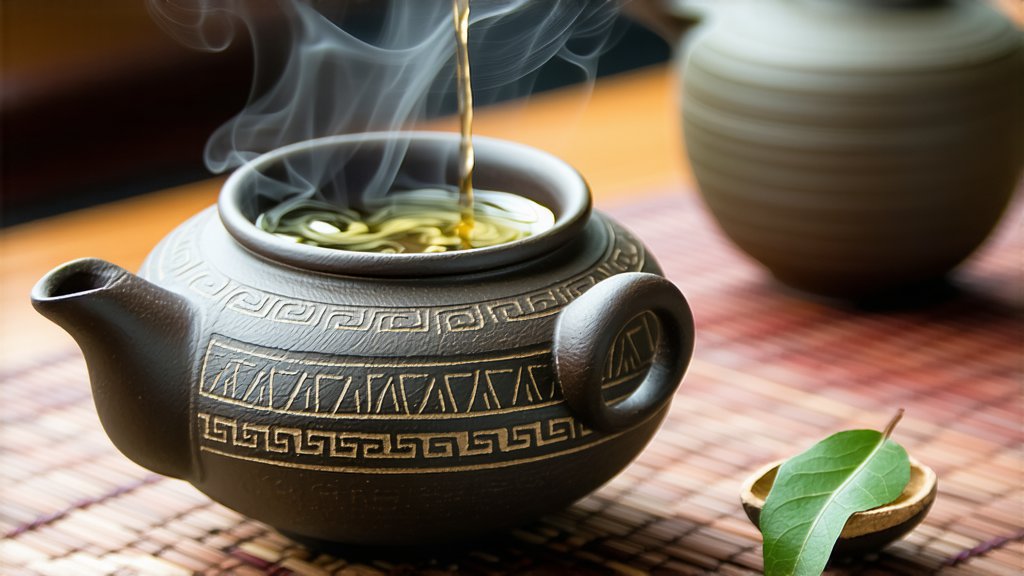
Liu Bao tea, also known as "Liubaocha" or simply "Liubao," stands as one of the most revered and distinctive varieties within the vast spectrum of Chinese black teas, or Hei Cha. This unique tea, originating from the Guangxi province of China, has garnered international acclaim for its complex flavors, medicinal properties, and the meticulous craftsmanship involved in its production. In this exploration, we delve into the historical roots, diverse types, intricate manufacturing processes, and the art of appreciating Liu Bao tea, offering an insightful glimpse for enthusiasts worldwide.
Historical Background
The history of Liu Bao tea traces back to the Qing Dynasty (1644-1912), with its name derived from the Liu Bao township in Guangxi's Wuzhou Prefecture. Originally, this region was renowned for producing high-quality green teas until the late 19th century when local tea merchants discovered that aging these teas in bamboo baskets imparted unique flavors and health benefits. Over time, Liu Bao evolved into a distinct category of dark tea, characterized by its post-fermentation process, similar to Pu-erh but with its own regional nuances.
Varieties of Liu Bao Tea
Liu Bao tea comes in several forms, each with its own aging potential and flavor profile:
-
Raw Liu Bao: Also known as "Sheng Liu Bao," this type undergoes minimal processing after initial drying and is then aged naturally. It retains a more vibrant character with hints of sweetness and fruitiness, gradually maturing over years to develop deeper, earthier notes.
-
Cooked Liu Bao: Referred to as "Shou Liu Bao," this variety undergoes a controlled fermentation process akin to Pu-erh's wo dui method. The result is a tea that exhibits a richer, mellower taste with less astringency, often preferred by those seeking immediate enjoyment rather than long-term aging.
-
Bamboo Basket Aged: A traditional method where tea is packed into large bamboo baskets and allowed to age naturally. This process enhances the tea's complexity, introducing woody, earthy, and sometimes even smoky undertones.
Craftsmanship and Production
The making of Liu Bao tea is an art form that combines tradition with precision. Here’s a glimpse into its creation:
-
Plucking: Tea leaves are selectively handpicked during the spring and autumn seasons when they are at their freshest and most nutrient-rich.
-
Withering: Freshly harvested leaves are spread out under the sun or in shaded areas to reduce moisture content, softening the leaves for rolling.
-
Rolling: Leaves are rolled to release juices, which initiate oxidation and shape the leaves into tight curls or twists.
-
Drying: The rolled leaves are gently dried to halt oxidation and preserve their natural flavors.
-
Aging: Depending on the desired style, the tea may be further processed into raw or cooked Liu Bao and then stored in ventilated environments like wooden warehouses or traditional bamboo baskets. Aging transforms the tea, deepening its flavor profile and enhancing its health benefits.
Appreciating Liu Bao Tea
To truly appreciate Liu Bao tea requires not just tasting but engaging all senses in a mindful ritual:
-
Preparation: Use a Yixing clay teapot or a Gaiwan for optimal flavor extraction. Rinse the leaves briefly with boiling water to awaken their aroma.
-
Brewing: Steep the tea in water heated to around 95°C (203°F) for about 10-15 seconds for the first infusion, gradually increasing steeping time for subsequent brews.
-
Observation: Admire the transformation of dry leaves into a dark, amber liquor, noting any changes in color and clarity.
-
Aroma: Inhale deeply before sipping to detect the tea's evolving scents—earthy, woody, with possible notes of caramel or dried fruit.
-
Tasting: Sip slowly, allowing the tea to coat your palate. Notice the balance between sweetness, bitterness, and astringency, and how it lingers on your tongue.
-
Texture: Feel the tea's mouthfeel; a well-aged Liu Bao should have a silky smoothness that glides effortlessly.
-
Aftertaste: Pay attention to the lasting impression left in your mouth, which can range from sweet and cooling to warm and comforting.
In conclusion, Liu Bao tea embodies the essence of Chinese tea culture—its history intertwined with centuries-old traditions, its production a testament to artisanal skill, and its consumption a meditative experience that transcends the ordinary. For those who embark on this journey, Liu Bao offers not just a beverage but a profound connection to a timeless legacy of taste and wellness.